Yucatan News: Green Gold and Public Health
Henequen Production Up 40 Percent in Yucatan
Over the past two years, the 1,600 henequeneros of the Yucatan, farming in 39 municipalities, have increased their production of Yucatan’s Green Gold by an astonishing 40 percent. That has earned these farmers 9.6 million pesos from a mixture of state and federal funds to finance their next crop. The money will go to pay for planting both old and new fields, for marketing, for the salaries of farm workers, and even money for local schools. This comes at the same time that the state is delivering new tinacos to entire villages under the Program for the Development of Priority Areas (PDZP). In addition to all this, SEDESOL (Ministry of Social Development) has 26 million pesos that it is using to bring new water treatment plants in rural areas as a public health measure. Yucatan’s henequeneros were overdue for their turn at prosperity, but it’s a new day in rural Yucatan and life is better than ever before.
The Importance of the 3x1 Program
Just prior to the beginning of the new century, it was realized that the remittances from Mexican migrants in the United States amounted to a great deal of money, but this money was only being used to briefly benefit the household of the migrant. Once that money was spent, it was gone and help was needed for the family again. In the 3x1 program, the migrant sends his or her remittance to a local migrant’s association. They enter it into a fund which is then matched by the migrant’s home municipality, state, and federal governments. Local municipalities are then able to complete projects that benefit the entire community. The current Governor of Yucatan said it best when he said that this whole effort of the three levels of government is about always linking our migrants to their identity, commitment, and, no matter where they live, keeping them connected with their homeland so they will have a sense of attachment to Yucatan and each of its municipalities. This motivates them to contribute, through their own efforts, to the efforts being made by their families. Through the 3x1 program, migrants have seen to it that their home municipalities now have better schools, homes with new roofs, better parks, new community centers, health clinics, the best roads, and that no one goes hungry. Thus far in 2014 through the 3x1 program, migrants have been responsible for 29 million 3x1 pesos flowing into the infrastructure of Yucatan. It isn’t hard to see the changes this one migrant program has had on the quality of life throughout Yucatan.
Migrants Coming Home for Christmas
There are over 180,000 Yucatecos living and working in the United States. Thousands return home for major holidays throughout the year, but Christmas sees the largest number coming in through all major airports and bus stations. Many of the migrants bring their children home with them and need help with a variety of immigration issues, such as travel formalities for themselves or dual citizenship for their children. Last year, these INM booths helped make the holidays easier than ever for 4,500 migrants who needed their questions answered. This year looks as if it is going to be a record-breaker with respect to sheer numbers of migrants coming home for Christmas. INM is at the ready with booths already set up in the airport to help with the growing numbers of home-for-the-holidays migrants.
Mexican Migrants to Vote Absentee in Next Elections
Yucatecos who live in the United States are, for the most part, concentrated in San Francisco, Los Angeles and Portland, with a significant number also living in the states of New York and Texas. Until now, Mexicans leaving their home states and the country effectively disenfranchised themselves. According to the Confederación de Federaciones Mexicanas en Estados Unidos, the rights of migrants have not been protected because they do not have the power to vote, in spite of the millions of United States dollars they send home to Mexico in remittances each year. But this is a new era. Other nations have had absentee voting laws for decades and now, so does Mexico. Migrants will now be able to vote online for President and Federal Members of Congress, as well as for Governor of their home states. The right to vote absentee at the state and federal level will be of benefit to both the migrants and to Mexico. On the one hand, it gives migrants an edge when asking for increased funding for the 3x1 program and for Mexico to become a more visible interested party in immigration reform in the United States. On the other hand, it gives the Mexican federal and state governments a means of knowing who the migrants are and if there are more migrants in the United States than they originally believed.
INM Revisits Yucatan’s Immigration Numbers
The foreign population in the state of Yucatan is growing rapidly and has tripled in size over the past two decades. In 1990, there were 2,011 foreigners registered in Yucatan. In 2000, the number of foreigners rose to 3,489. In 2010, the registered foreign population of the State of Yucatan was 6,951. This number is based on people born abroad, whether they have become citizens of Mexico or not and is more than three times the number of foreign born residents of Yucatan listed in 1990. 31.1% of foreigners living in Yucatan are Americans, 11.6% are Cubans, 7.4% are Canadians, 3.8% are from Argentina, 3.7% are from France and the remaining 42.4% are from other nationalities. The numbers now are focusing on domestic immigration and the potential that has to affect services and the economy. The 2010 Census showed that 50,000 people from either other states in Mexico or from abroad were then living in Yucatan. When those who moved out of the state were subtracted from the population, there was a net gain of 37,932 people to the population of Yucatan. Almost five years have passed. Many more immigrants have come to settle in Yucatan, with a corresponding spike in efforts to ensure the survival of the culture here. It will be interesting to see what changes take place over the next five years which will all be reported in the next census in 2020.
Green Roofs and Vertical Gardens Coming to Merida?
In the name of saving energy, we will soon see three companies planting roofs in grass and as gardens throughout Mexico. According to their experts, these natural systems can be cultivated as green roofs, vertical gardens, facades and walls with vines. While the goal of turning the White City into a Green City seems laudable, it should be noted that researchers from the Faculty of Engineering at UADY and the University Anahuac Mayab are just now beginning to test these claims. Water-weight on roofs can cause severe damage if the project is not carried out properly. The roots of vines can completely destroy concrete walls in only a few years, so planting the right types of plants is very important. Engineering and Architecture majors are working hard to develop systems that could make these projects lighter and of lower cost, but state officials warn that we do not have any regulations concerning the building or maintenance of these systems. If and when this happens, we suspect there will be a special permit necessary and neither the government nor the construction industry have a favorable view of that right now. When the university researchers’ findings are published, only then will we know if this is a safe thing to do. In the meantime, watch and wait. Cooler days in the shade of your own home may be on the way. Do you have questions about this issue? One might be: Why would I put irrigated grass, a mosquito magnet, on my roof in a country that is trying to rid itself of dengue fever? On the other hand, we know people who have successful roof gardens. We are excited to see what the future will bring in this arena!
Public Health Conference Held in Merida: Announcements
The announcements that came out of the Public Health Conference in Merida are quite interesting and present a picture of Mexico that is growing and changing. The announcements include:
• Dengue Fever vaccinations will be available to the general public in 2016.
• Mexico has been declared free of Polio and Measles.
• Diseases declared “Under Control” in Mexico: cholera, influenza, malaria, dengue fever
• Pregnancy related deaths: in Yucatan: 3 per 100K. In Mexico: 30 per 100K. In the United States: 16.7 per 100K and in Canada: 6.6 per 100K
• Major focus of Public Health now is the war on obesity, hypertension and diabetes through diet, exercise and lifestyle changes.
To find out just how serious Yucatan is taking this initiative, look outside your window to the sidewalk early any morning and count the number of walkers and runners. If you live in a village, count the number of local vegetable producers you see. If your area has a farmers’ market, let us know and we will do our part by listing it. Even the state government has come out with promises of focusing on health and jobs. This is a great time to be living in a much healthier and more economically stable Yucatan!
The Fair at Xmatkuil Had Trade Fair Visitors
A group of individuals who are the presidents and organizers of trade fairs across the nation came to see how the Fair at Xmatkuil operates and to give their opinion of what they saw. They commented that investments in such fairs are high when compared to investments in the fair in Yucatan, specifically citing the billion pesos invested in the Fair at Guadalajara. Yucatan’s organizers reminded them that the City of Guadalajara has a population of six million, while the state of Yucatan has a population of three million. The visitors also seemed surprised to see how many free and reduced cost events were put on at Xmatkuil. Organizers of Yucatan’s Fair at Xmatkuil were quick to point out that their goal here in Yucatan is to have the fair be self-sufficient and for the vendors to make a profit. They work hard to achieve that balance. This year, 900K visitors entered the fair with a paid ticket and 500K came through free or reduced-price promotions and programs. We are just happy that, even if it does cost $50 pesos to get into the state fair in Sonora, anybody can purchase a ticket to go to the Fair at Xmatkuil for a whopping $15 pesos! Well done and thank you to the organizers of Yucatan’s Fair at Xmatkuil.
Surprise Party for the Public in Uman
For the past 24 years, Uman has celebrated the day it officially passed from being a village to a city. For the past three years, this celebration has included an Expo Campo, featuring producers of cattle, goats, sheep, rabbits, and fish (tilapia). They also had exhibitors of fighting roosters (Hopefully that will soon change). Also exhibiting were agricultural schools from around the state, as well as representatives of agricultural government agencies. On the last day, the organizers decided to throw the closing ceremonies open to the public and to hold the event at the nearby Rancho Las Veletas. The Cobay Folkloric Ballet danced a performance showing snapshots of life in Yucatan, and the wonderful Yucalpeten Typical Orchestra ended the evening with a flourish. In between, there was a show put on by the beautiful Spanish-style trained horses of Rancho Las Veletas. If you are planning to visit Yucatan, these are the types of events that are not publicized until they end. So, when we report on something like this, make a note of when, where and what it is. It might just fit into your travel plans and become the highlight of your trip next year!
Progreso Gets New Motor Therapy and Multi-Sensory Stimulation Center
Slowly, but surely, Progreso has left behind the notion that it is a sleepy little fishing village. In Progreso today, expats feel comfortable with a wide variety of health care options. Every year, it seems that new medical technology and expertise arrive. The children and young people who attend the new Motor Therapy and Multi-Sensory Stimulation rehabilitation center can expect to go much farther than they ever could have without this resource nearby. Congratulations to the Municipality of Progreso, to the DIF, and to everyone who worked so hard to bring this rehabilitation center to the people.




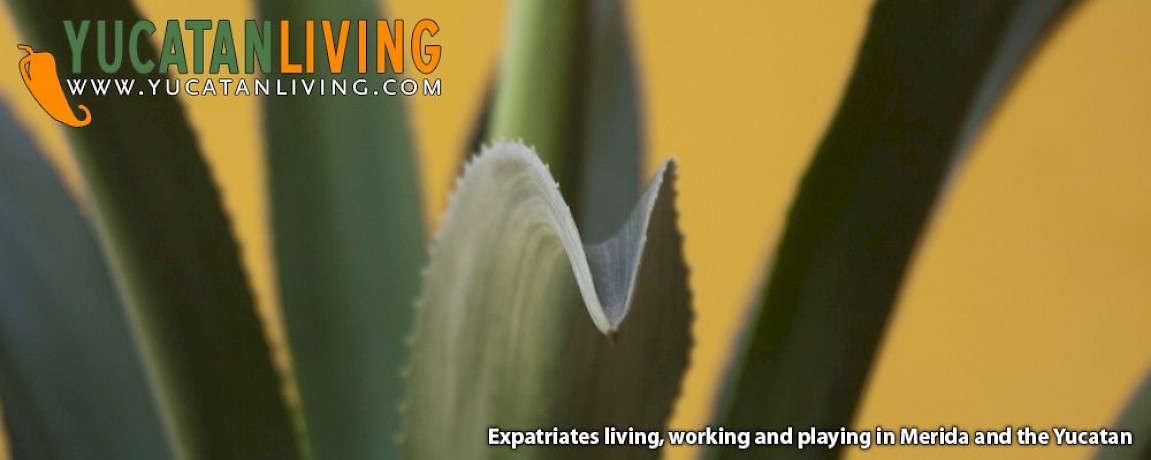



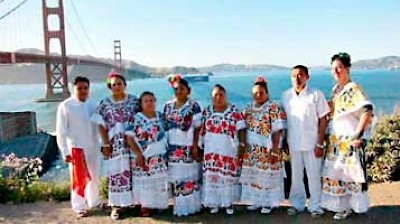
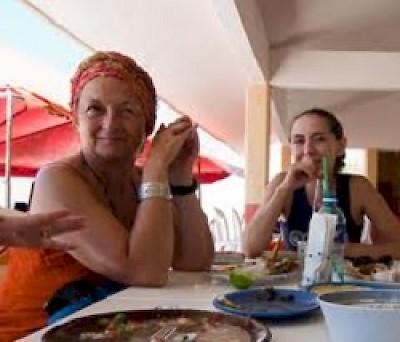
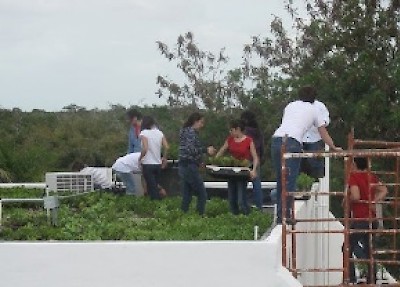
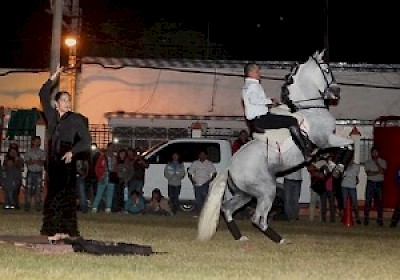
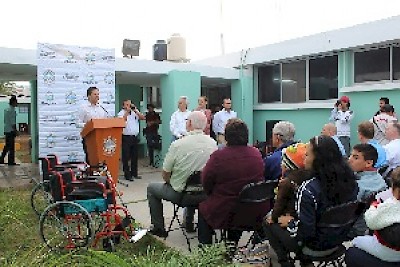

Comments
JG 11 years ago
Who is running these Motor Therapy and Multi-Sensory Stimulation rehab programs? Where can I find more information? Also, is occupational therapy a service needed or in even utilized in the area?
Reply
Dorothy 11 years ago
Hi.. always enjoy reading this part of your newsletter.. so informative.. I only have one point to make related to article on Green roofs and that is, we have irrigated grass at our beach home and far fewer mosquitoes than when we only had sand... The same would be said by others who have replaced sand properties with plants and grass.
Reply
(0 to 2 comments)